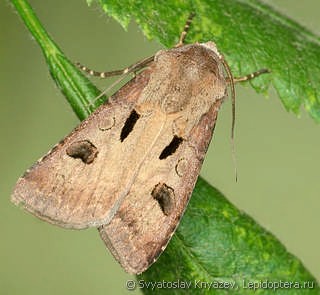Agrotis vancouverensis
(Agrotis vancouverensis)

Description
Agrotis vancouverensis, the Vancouver dart, is a moth of the family Noctuidae. The species was first described by Augustus Radcliffe Grote in 1873. It is found in the Pacific Northwest of North America and is common west of the Cascade Mountains. The length of the forewings is about 33 mm. Adults are on wing in late spring and early summer. There is one generation per year. The larvae feed on various herbs. Agrotis is a genus of moths of the family Noctuidae. The genus was erected by Ferdinand Ochsenheimer in 1816. A number of the species of this genus are extinct.The proboscis is well developed. Palpi obliquely porrect (extending forward), where the second joint evenly scaled and third joint prominent. Thorax and abdomen without tufts. Abdomen somewhat flattened. Tibia very strongly spined. Forewings with non-crenulate outer margin. Hindwings with veins 3 and 4 from cell.Many of the species are of great importance as cutworms, major agricultural pests whose larvae hide by day and emerge at night to feed. The name cutworm refers to the habit of the larvae, of cutting down and partly eating garden and crop plants, especially seedlings. Not all cutworms are in the genus Agrotis, though it may well be the genus that includes the largest number of cutworm species, and the most agriculturally important cutworm species. The bogong moth, itself a cutworm, also has been of importance as a seasonal food for humans, valued by indigenous Australians.
Taxonomic tree:







